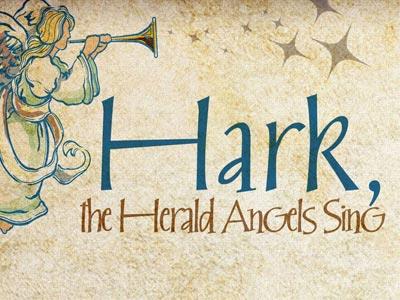-
A Look At The Manger
Contributed by Jim Kane on Nov 28, 2017 (message contributor)
Summary: Christmas Eve 2006 Sermon
(Slide 1) We have spent this Advent season coming alongside Joseph and the Shepherds, experiencing an unforgettable Christmas play, and the hanging of our Christmas greens. This morning though we are going to make a stop at the most important place of Advent – the manger. (Slide 2)
Last week 27 of you graciously responded to my survey that asked ‘Which symbol is the most representative of Christmas?’ Here are the results: (Slide 3)
In fourth place with ‘zero’ votes was the candle! (Slide 3A)
In third place with one vote was the wreath! (Slide 3B)
In second place with four votes was the tree! (Slide 3C)
And in first place with 22 votes was the manger scene! (Slide 4)
After I had the survey printed I thought, ‘I should have had a dollar bill sign on the survey!’ If there had been a dollar bill or other kind of a money symbol, how many of you would have picked that one as the most representative symbol of Christmas?
Now, let me ask you, “What is the most definitive not representative symbol of Christmas?” It is not an object such as a tree or candle or wreath. It is not an event such as a sale or Black Friday (the big shopping day after Thanksgiving) or the gift-giving event of this weekend.
The most definitive and true symbol of Christmas is … the baby in the manger, the Christ child, Jesus Christ Himself! Everything we read in the Biblical account of Christmas centers around the birth of Jesus, the Messiah, our redeemer and savior!
No Jesus, no Christmas, it is as simple as that! And shopping and sales and gift giving and parties were not a part of that first and subsequent Christmas.
I did some checking this past week on the history and origins of Christmas and from the on-line encyclopedia, Encarta, I read, “… most scholars believe that Christmas originated in the 4th century as a Christian substitute for pagan celebrations of the winter solstice… Although the Gospels describe Jesus’ birth in detail, they never mention the date, so historians do not know on what date he was born. The Roman Catholic Church chose December 25 as the day for the Feast of the Nativity in order to give Christian meaning to existing pagan rituals... The Catholic Church hoped to draw pagans into its religion by allowing them to continue their revelry while simultaneously honoring the birthday of Jesus.”
The article continues, “Over the next 1000 years, the observance of Christmas followed the expansion of Christianity into the rest of Europe and into Egypt. Along the way, Christian beliefs combined with existing pagan feasts and winter rituals to create many long-standing traditions of Christmas celebrations…
Then when the Reformation took place in the 16th century or 1500’s and Christianity divided into two factions, Catholic and Protestant, the article indicates that “Protestants challenged the authority of the Catholic Church, including its toleration of surviving pagan traditions during Christmas festivities. For a brief time during the 17th century, Puritans banned Christmas in England and in some English colonies in North America because they felt it had become a season best known for gambling, flamboyant public behavior, and overindulgence in food and drink.”
It goes on to say that “in the United States and Canada, many elements of modern Christmas celebrations did not emerge until the 19th century. Before then Christmas had been an ordinary workday in many communities, particularly in New England, where early Puritan objections to Christmas celebrations remained highly influential.
Most holiday gifts were limited to small amounts of money and modest presents passed from the wealthy to the poor and from masters to their servants. Families almost never exchanged Christmas gifts among themselves.”
But, says the article, “Christmas gained increased prominence largely because many people believed it could draw families together and honor children. Giving gifts to children and loved ones eventually replaced the raucous public celebrations of the past, and Christmas became primarily a domestic holiday”… “Many holiday celebrants,” concludes the article, “regretted these changes, however, and began voicing the now common lament that Christmas had become too commercial.”
An interesting perspective in light of the current issues regarding the secularization of Christmas.
There is probably much that makes us shake our head at and say, ‘it is too commercial and we easily lose sight of the importance of the holiday.’ This leads me back to the manger.
There were no malls back then. There was no Santa Claus, or office parties or white elephant gift exchange. There was only the birth of Jesus.
I spoke with someone this past week that went to see ‘The Nativity.’ I asked them what they thought of it. Their answer was that they did not see how Joseph and Mary survived that journey from Nazareth to Bethlehem.

 Sermon Central
Sermon Central



